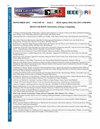用于跨模态哈希检索的多层次深度语义特征非对称网络
IF 1.3
4区 工程技术
Q3 COMPUTER SCIENCE, INFORMATION SYSTEMS
引用次数: 0
摘要
跨模态哈希检索因其高效和低存储开销而被广泛应用。在有监督的跨模态哈希检索领域,现有方法在提炼数据特征方面存在局限性,导致语义信息提取不够详细,不能准确反映数据的相似性。挑战在于如何利用数据的多层次深层语义特征生成更精细的哈希表示,从而减少不同模态造成的语义差距和异质性。为了解决这个具有挑战性的问题,我们提出了一种多层次深度语义特征非对称网络结构(MDSAN)。首先,该结构探索数据的多层次深层特征,在更丰富的监督信息指导下生成更准确的哈希表征。其次,我们研究了不同模态内部和模态之间的非对称相似性的保留问题,从而可以更全面地利用多层次深度特征来弥合不同模态数据之间的差距。我们的网络架构有效提高了模型的准确性和鲁棒性。在三个数据集上进行的广泛实验验证了 MDSAN 模型结构与现有方法相比具有显著的改进优势。本文章由计算机程序翻译,如有差异,请以英文原文为准。
Multilevel Deep Semantic Feature Asymmetric Network for Cross-Modal Hashing Retrieval
Cross-modal hash retrieval has been widely applied due to its efficiency and low storage overhead. In the domain of supervised cross-modal hash retrieval, existing methods exhibit limitations in refining data features, leading to insufficiently detailed semantic information extraction and inaccurate reflection of data similarity. The challenge lies in utilizing multi-level deep semantic features of the data to generate more refined hash representations, thereby reducing the semantic gap and heterogeneity caused by different modalities. To address this challenging problem, we propose a multilevel deep semantic feature asymmetric network structure (MDSAN). Firstly, this architecture explores the multilevel deep features of the data, generating more accurate hash representations under richer supervised information guidance. Secondly, we investigate the preservation of asymmetric similarity within and between different modalities, allowing for a more comprehensive utilization of the multilevel deep features to bridge the gap among diverse modal data. Our network architecture effectively enhances model accuracy and robustness. Extensive experiments on three datasets validate the significant improvement advantages of the MDSAN model structure compared to current methods.
求助全文
通过发布文献求助,成功后即可免费获取论文全文。
去求助
来源期刊

IEEE Latin America Transactions
COMPUTER SCIENCE, INFORMATION SYSTEMS-ENGINEERING, ELECTRICAL & ELECTRONIC
CiteScore
3.50
自引率
7.70%
发文量
192
审稿时长
3-8 weeks
期刊介绍:
IEEE Latin America Transactions (IEEE LATAM) is an interdisciplinary journal focused on the dissemination of original and quality research papers / review articles in Spanish and Portuguese of emerging topics in three main areas: Computing, Electric Energy and Electronics. Some of the sub-areas of the journal are, but not limited to: Automatic control, communications, instrumentation, artificial intelligence, power and industrial electronics, fault diagnosis and detection, transportation electrification, internet of things, electrical machines, circuits and systems, biomedicine and biomedical / haptic applications, secure communications, robotics, sensors and actuators, computer networks, smart grids, among others.
 求助内容:
求助内容: 应助结果提醒方式:
应助结果提醒方式:


